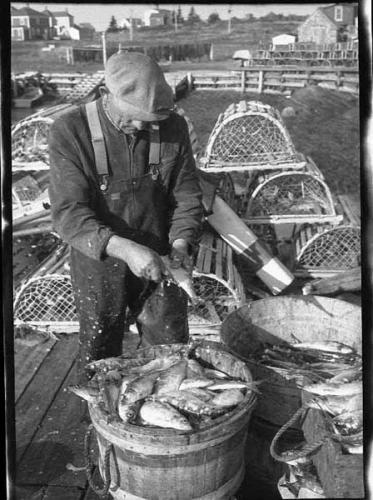
Once cod was king of the sea, but now that throne is owned by a gnarly looking crustacean, the lobster. Lobster is a major player in Nova Scotia’s economy, and on the last Monday of November, District 33 opens for what will hopefully be a prosperous and safe lobster fishing season.
Harvesting lobster is rooted with the Mi’Kmaq. Lobsters (Wolum Keeh) were plentiful, often found on beaches at low tide or washed up on shore after storms. The Mi’Kmaq used lobster as a source of food, fertilizer, and for ornamental material, such as using a lobster claw as a tobacco pouch. During the day, lobsters could be speared in shallow waters by spreading a slick of oil over the water’s surface. This created underwater darkness, fooling lobsters out of hiding to hunt. Spearing lobsters at night could be done if also using a torch.
Before a fully established lobster fishery existed, lobsters were sold at local markets. Fishers received a better price if there were no spear marks. Seeking a better market price led to the broader usage of wire cages, an adaptation of early French wire cages, bouraques, used to catch crayfish and spiny lobsters. Shortly after the introduction of wire cages came the lobster hoop pot. The next spur that really kick-started the beginning of the lobster fishery was the invention of the stamp can (sealed tins for packing food). At the outset, lobster was being processed in fishers’ homes, one pound of lobster meat per can. As early as the 1870’s, Shedd & Knox Co. began operation of a lobster cannery on Pictou Island.
In 1871, the government introduced regulations regarding ‘berried’ (egg bearing) lobsters, size of lobsters, and soft-shelled lobsters being harvested. It is now an established industry.
Today the lobster industry is primarily based on live lobster markets and is our most valuable seafood export. We may not see lobsters washed up on our shores, but we apparently have a profitable amount crawling around our ocean floor. Long live lobster!
Hilda Russell
Curator of Interpretation
Fisheries Museum of the Atlantic